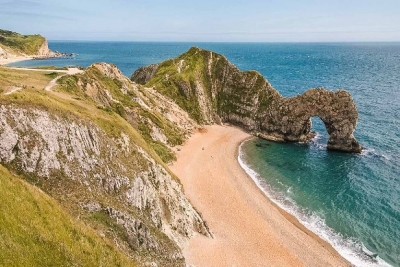
Made up of eight sections along the southern coast of Britain, the Dorset and East Devon coast contains rock formations from the Triassic, Jurassic and Cretaceous eras. This makes it important in the study of palaeontology and Geomorphology. It was designated a UNESCO World Heritage Site in 2001.
Fossils of land and sea animals as well as Dinosaur footprints have been discovered from this area. The dinosaur footprints include that of Dimorphodon macronyx, a flying reptile and Scelidosaurus harrisoni also known as the Charmouth dinosaur. Researchers have learnt much about Earth’s history in the last 300 years by studying Dorset and East Devon coasts. This region has variously been desert, shallow tropical sea and marsh-land during the course of time.
As a result, diverse natural features are found on this coast. Arches and stack rocks are found along with caves with restricted entrances made by the sea. At one point The Isle of Portland is connected to land by a barrier beach. Certain areas of the coast even experience landslides.
Picture Credit : Google




